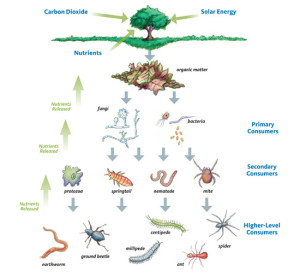It’s May and gardening season is here! Hip hip hooray!
Whether you have a garden in the backyard, you plan a trip to a local farm or you volunteer at a community garden, make sure to get the entire family outside to see how food is made this summer!
Getting your hands dirty is fun and can be educational for everyone. Showing children, teens and even adults that food should come from the ground instead of a bag or box changes everything. They then gain a better understanding of what “real” food is and what their bodies need.
A farm/garden trip:
- Farms and gardens are closer than you think: See what is close to you by searching on Google if you don’t know where to find a garden or farm. Reach out to your green thumbed friends (who ALWAYS want to show their hard work off) or start conversations with vendors at the farmers market.
- Are you a believer? Before you take the family to the farm make sure you understand the importance in getting food from the ground. You aren’t going to be very convincing if you yourself aren’t a believer…and have a stash of Oreos in your purse. Kids pick up on your passion and beliefs. Do you want your child to be the healthiest he/she can be? Do you want to not have to force vegetables or fruits but instead have your children begging for them? Okay then, believe in the power and perfection of food straight from the ground.
- Plan your trip, go somewhere you can get dirty! If you are able to, ask to work in the garden or farm. They will most likely say yes, because who doesn’t want extra free help. Whether it’s just pulling weeds, helping planting or picking ripe fruit, giving kids a first hand look helps build a deep love for food. Getting your hands dirty is like a love spell from Mother Nature.
- Key points to cover while on your garden trip:
– Man made vs. nature made: Things that come from bags and boxes often times have chemicals in them that our bodies don’t want or need so we must pay attention to how much processed foods we have. While reminding them that they can still have their favorite cheddar bunnies or cookies but they should be limited because what our body really craves is things from the ground like fruits and vegetables!
– People have been eating things from the ground forever: Long before Cocoa Cola was even a thought in someone’s mind. How do you think Great Grandma and Grandpa (or Great Great Grandma depending your age) got their food? Giving examples that they can refer to helps them grasp what you are saying and really understand.
– How does it happen – the magic trick of seeds to plants: What is required for a seed to grow to a plant that produces fruit? Sun, water and healthy soil. Buy a pack of seeds and have your children see where the plant begins (these are just for show but if you want to go a step further, show them the seeds before you go to the farm/garden and put them in a pot with dirt in there. Only put a few seeds in on loosely packed dirt and cover them lightly with a little dirt. Now watch them grow!) For more information to get you prepped for the trip visit my Gardening 101 post!
– Conventional vs. Organic: Go into this as much as you want depending the ages of your children and your own beliefs. The take away being that they eat fruits/veggies not that they know the difference between these terms. Although, I think it is important for them to have heard of organic and know why some people prefer to eat organic produce (they have not been sprayed with pesticides or chemicals).
– What are GMOS? It’s not just OMG backwards. This would be an intro to this only to get them “in the know.” Play a game to see how many things you can make up with the letters GMO (general mommy offices, gross me out, goofy mummy octopus…hopefully your kids are more cleaver than me) then tell them that GMO actually stands for Genetically Modified Organisms. Lots of big words that means seeds are changed – or another word for that is modified – in a lab by scientists to get a specific trait or characteristic like preventing bugs from liking the fruit/veggie or to grow extra big. I like this website if you are looking for additional information regarding GMOs or are looking for kid friendly wording.
- All that hard work…you’ve earned food! After you are tired from working and learning, a picnic makes a perfect relaxing ending to a garden day. Pack a snack with strictly things from the Earth. This will take some creativity and preparation from you. I suggest cut veggies and fruit, plain jane so they can see how they come straight from the ground then mix it up with an avocado/mango salad, roasted sweet potato fries to dip into homemade hummus, frozen grapes, apples and honey, etc.
- Reinforce: Throughout the week write a note in their lunches with what local things you were able to put in their lunch or share at dinner what goodies came from the ground. Get it in those little noggins good while it is still fresh!
Remember that you can absolutely do this! It takes time (that most likely you don’t have) but it is completely worth it and you will have fun doing it. Look at it as an opportunity, an exciting adventure…not a chore or another have to.
Smile, get your hands dirty and have fun!
XO,
ML











